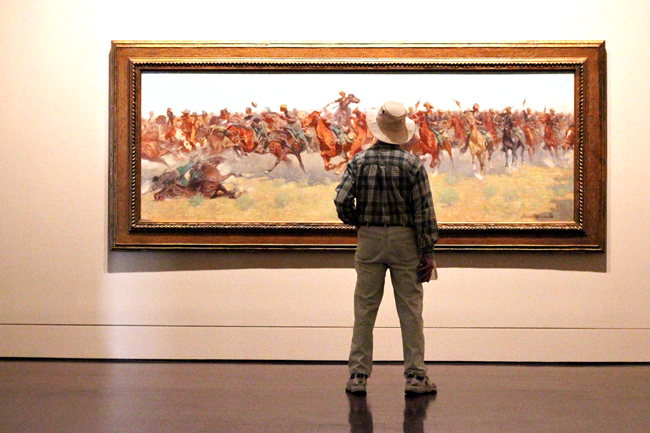In October 2012, a group of researchers at the University of Chicago began a conversation. The topic of debate? Campus art museums in the 21st century. In trickled a dozen directors, among them leaders from Harvard, Duke and Stanford, to analyze and critique the state of campus museums nationwide. Their findings amounted to this: “Campus museums have unique potential to emerge as leaders and change agents in the new era.”
The burning question, of course, is how?
Campus museums are described as being more experimental and innovative than other museums, factors that allow them to pursue more unconventional kinds of exhibitions. And in order to cater to a wide variety of academic fields, campus museums must translate their respective brands into a diverse array of frameworks.
For example, Kathleen Stimpert, the director of public relations and marketing at the Blanton Museum of Art here at The University of Texas, refers to artists as the “chroniclers of history.” Recognition of a previously discussed historical character in a painting allows students to see the tangible results of their learning. By reinforcing the character’s relevance, the painting rewards the mind and encourages further study.
Many Signature Courses provided by the School of Undergraduate Studies directly integrate the museum into their coursework. Their professors encourage visits and are provided with advertisements for upcoming events. Antonella Olson, a distinguished senior lecturer in the French and Italian department, teaches such a course to freshmen. She constantly reiterates the fact that her students’ understanding of a topic improves significantly after they have been exposed to tangible examples at the Blanton Museum. “It shows in their writing,” Olson says, “since their subjects are suddenly real to them.”
The Blanton Museum offers a hub of tangible resources to students, faculty and the local Austin community. Students have the opportunity to visit the museum and its exhibitions at any time, free of charge. The museum also offers a training program for enthusiastic student volunteers. Guided tours are easily arranged, and faculty and organization leaders may book them at their leisure. The opportunities are numerous and the academic gains tangible, yet, according to Stimpert, student visits still make up less than half of the total number of visitors.
When asked why this might be the case, Stimpert alludes to students’ busy schedules. Across the board, students cite an overflowing list of obligations that keep them busy from sunup to sundown.
Economics junior Stephen Vincent points to the establishment of a routine that does not usually include a time slot for museum visits. “If it’s not in their particular field of interest, [students] just won’t make the time,” Vincent said.
“The key is to get them in for the initial visit — after that they will keep coming,” Stimpert said.
Perhaps the most important benefit of campus art museums is their contribution to the growth of art appreciation in their visitors through education. Students may not fully understand what their eyes are telling them, but they can respect the skill poured into the creation of the piece. If the time is then taken to explain the stylistic characteristics of the piece and its relevance, the student is more likely to see it in his or her own personal context. Computer science junior Alexander Ventura admits: “I would actually go a lot more if I could get a small one-on-one tour of a particular section.” It is the hesitant visitors of today that will provide the exhibitions of tomorrow — perhaps they may even be the ones signing their names at the bottom.
Petsch is a business honors, finance and history sophomore from Houston.





















